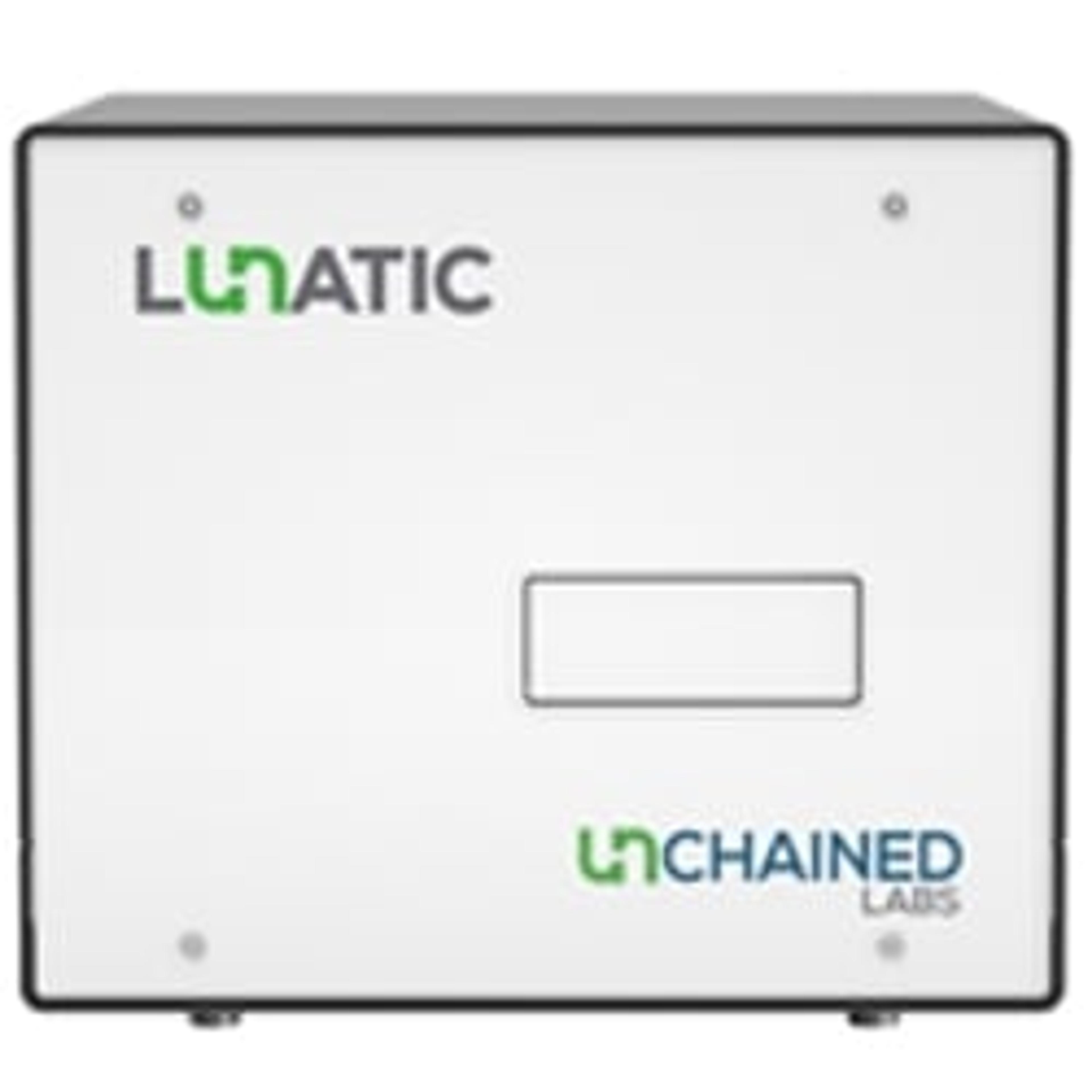Supercharge DNA & RNA quantification with fast, one-step reads on Lunatic
Watch this on-demand webinar to learn how to take your nucleic acid quantification to the next level of speed, accuracy, and throughput
12 Feb 2021

In this SelectScience webinar, now available on demand, product manager Nelis Denys explains how Unchained Labs' Lunatic can take DNA and RNA quantification to new heights by analyzing up to 96 samples at a time in just 10 minutes – with only 2µl of sample.
Whether you are isolating nucleic acids from plasma or quality-controlling a boatload of plasmid preps, say goodbye to the madness of sluggish, one-at-a-time nucleic acid quantification and discover how the Lunatic avoids error-prone dilutions and annoying cleaning steps while producing accurate, precise, and high-throughput nucleic acid quant data.
Watch on demandFind highlights from the live Q&A session below or register to watch the webinar at a time that suits you>>
Q: How does the Lunatic handle oligonucleotides?
ND: The Lunatic has multiple applications for oligos, both DNA and RNA. You simply need to specify either your molecular weight and molar extinction coefficients or just enter the sequence of your oligo, and then the software will calculate your concentration factor. So yes, it works well with oligos.
Q: Does Lunatic have any applications for other biological samples?
ND: Yes, nucleic acids are definitely not the only ones. We have DNA, RNA, and plasma QC applications, but also applications for protein, labels, biologic samples, or to measure at any wavelength since we gather the full spectrum absorbance. We have a feature where you can make your own application and choose the wavelength of interest. If you have a very specific requirement and you need our help, we love to support that too, but generally, a high variety of biological samples can be measured.
Q: What is the lowest concentration of DNA and RNA that can be measured?
ND: Our limit of detection for double-stranded DNA is 1.5 nanograms per microliter. If I'm not mistaken, for RNA, that would make it 1.2. In general, our absorbance limit is 0.03 optical density (OD), and depending on what exactly your sample is, there’s a concentration factor that is used to calculate concentration.
Q: What should I use to blank with Lunatic?
ND: That depends on your application. For normal or general applications, it is recommended to blank with your sample buffer. When using Unmix applications, you should use water as a blank in order to not interfere with the fitting.
Q: Can I run experiments with different buffers on one plate and still blank?
ND: Yes. There are a lot of features in the software and one is putting your 96-well plate in different sample groups. So, for each sample group, you can specify which samples are in that group and which blank needs to be applied to that sample group. So, yes, there is no problem with doing multiple samples with different buffers and correcting them with the correct blank.
Q: Do I always need to run a full plate?
ND: No, that's definitely not needed. You can mark what you used and just run, for example, 16 samples instead of 96, and then use the rest of your plate for your next measurement.
Q: How could the Lunatic fit into automated workflows?
ND: That's very dependent on what you exactly want to do. You can put it everywhere in your automation. For example, if you have a sample that has an unknown concentration and you want to normalize it at the end, you can run it on the Lunatic and get your output to automatically go back into your automation setup, so you know how much volume you need to dilute. I would say there's a high number of possibilities, and we can definitely help you look into where it would fit in your specific system.
Q: How are other impurities separated from the DNA or RNA measurement?
ND: So, this is referring to our Unmix applications. Basically, you have your raw spectrum that is measured, and then, from the impurities that are specified and the DNA or RNA spectra, our algorithm will find the best fit for all those things combined. This is why it is a select number of impurities and not just any random thing that will be fitted – it is a known list of impurities for each application.
Q: Can the system be connected to our LIMS?
ND: Yes. Our outputs can either be from within an automation setup or standalone. You can get multiple output files, .csv being the most commonly used in automation, but also Excel, PDF, or whatever you would like from the standalone. This can also be pre-set for the columns and the output you want, and then go directly into your LIMS, so you don't need to worry about data issues.
Watch this webinar to learn how to supercharge your DNA & RNA quantification >>
SelectScience runs 10+ webinars a month across various scientific topics, discover more of our upcoming webinars>>

